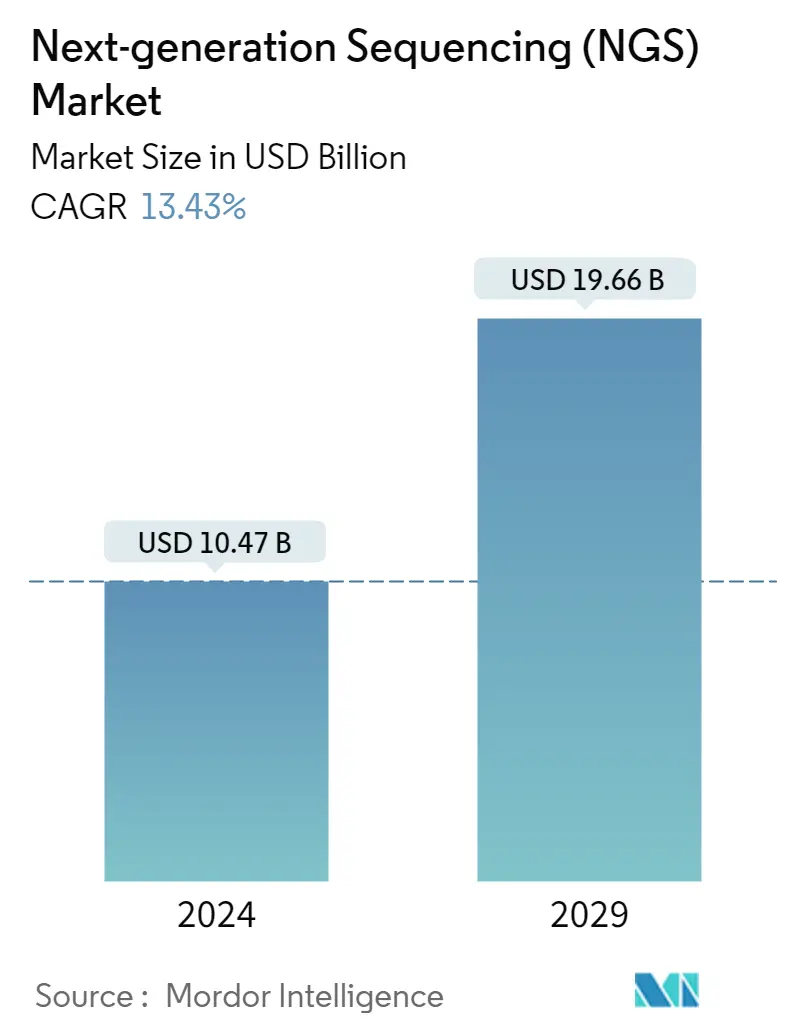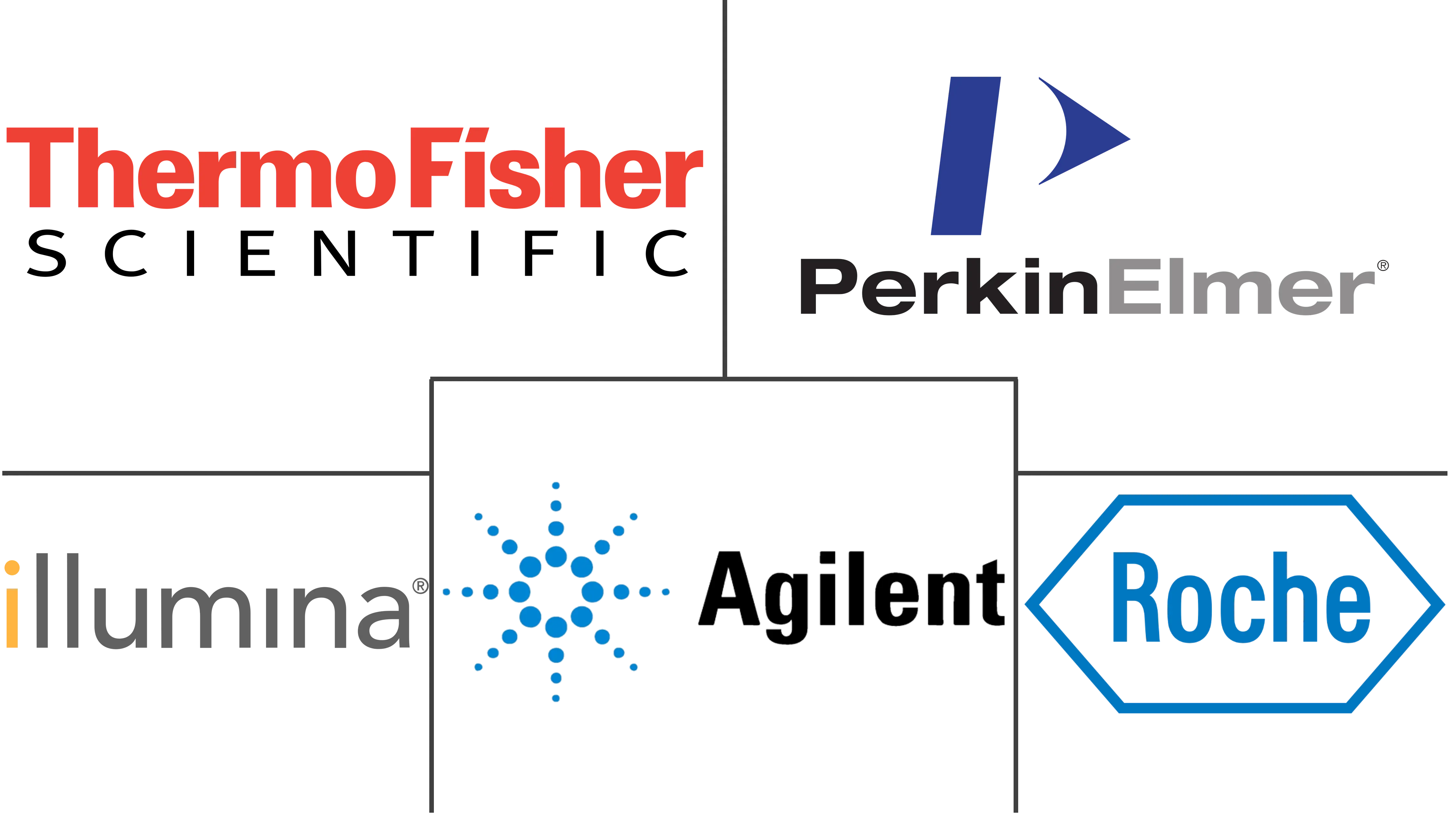Market Size of Next-generation Sequencing (NGS) Industry

| Study Period | 2019 - 2029 |
| Market Size (2024) | USD 10.47 Billion |
| Market Size (2029) | USD 19.66 Billion |
| CAGR (2024 - 2029) | 13.43 % |
| Fastest Growing Market | Asia-Pacific |
| Largest Market | North America |
Major Players
*Disclaimer: Major Players sorted in no particular order |
Need a report that reflects how COVID-19 has impacted this market and its growth?
Next Generation Sequencing (NGS) Market Analysis
The Next-generation Sequencing Market size is estimated at USD 10.47 billion in 2024, and is expected to reach USD 19.66 billion by 2029, growing at a CAGR of 13.43% during the forecast period (2024-2029).
The NGS diagnostic technology was able to find out a virus's genetic sequence and helped scientists figure out how mutations happen. During the COVID-19 pandemic, governments all over the world worked with the private sector to try to get NGS technology on the market as a possible diagnostic tool.For example, an article published by Frontiers in March 2022 says that next-generation sequencing (NGS) was used to study COVID-19, which made it much easier to find out where SARS-CoV-2 came from.It also said that NGS was important for looking into the possible origins and workings of SARS-CoV-2 in order to stop the spread of COVID-19 and make the treatment plan even better.Thus, the use of NGS technology increased throughout the pandemic phase. However, post-pandemic, the NGS market is expected to have stable growth during the forecast period of the study.
Factors such as the increasing applications in clinical diagnosis and speed, cost, and accuracy, and the increasing efficiency when compared to traditional technologies such as microarrays and the rising number of drug discovery applications are expected to boost market growth.
An upsurge in the use of NGS technology in clinical diagnosis and the speed, cost, and accuracy of this sequencing method are likely to boost the growth of the market. For instance, NGS has a lot of advantages over conventional sequencing techniques, according to an article from PubMed Central published in January 2021.These advantages include a higher throughput with sample multiplexing, a higher sensitivity for finding low-frequency variants, a faster turnaround time for high sample volumes, and a lower cost.Additionally, a PubMed Central article from April 2021 claimed that because NGS is capable of massively parallel sequencing and is steadily replacing its predecessor, conventional Sanger sequencing, it has significantly influenced the demand for more affordable and quick sequencing technologies.It is expected that NGS's advantages will help the market grow over the next few years.
The market is also expected to grow because replacing old technologies like microarrays will make them more efficient and because more drug discovery applications will need NGS technology.For example, an article published by Elsevier in August 2022 said that NGS was better than microarrays at detecting DNA and doing other genomic tasks.
Additionally, several market players are playing a key role in the development of drugs through this technology, which is also expected to boost market growth. For example, in January 2022, Illumina Inc. and Nashville Biosciences LLC, a wholly-owned subsidiary of Vanderbilt University Medical Center (VUMC), signed a multi-year agreement to speed up the development of new medicines through large-scale genomics and the creation of a leading clinical genomic resource using Illumina's next-generation sequencing (NGS) platforms.
Hence, the aforementioned factors, such as the rising developments by key market players, the efficiency in replacing the traditional technologies (such as microarrays), growing drug discovery applications demanding NGS technology, and an upsurge in the use of NGS technology in clinical diagnosis, are expected to boost the market's growth. However, factors such as legal and ethical issues, the interpretation of complex data, and the lack of skilled professionals are expected to impede market growth.

